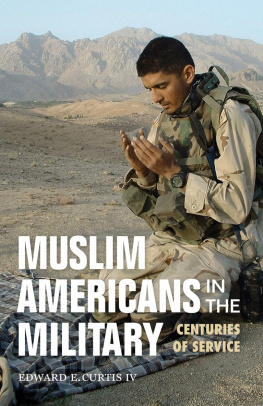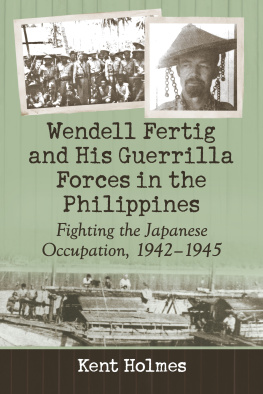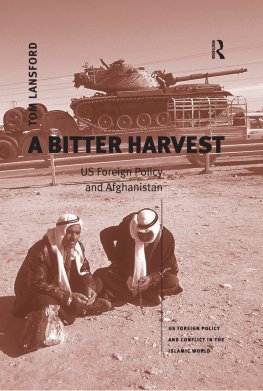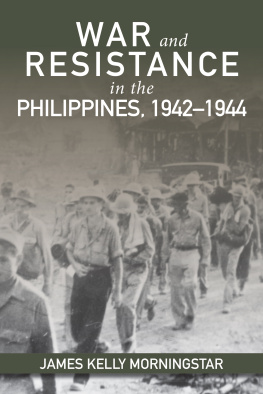Jungle of Snakes: A Century of Counterinsurgency Warfare from the Philippines to Iraq
Crisis in the Snows: Russia Confronts Napoleon: The Eylau Campaign 18061807
Marengo and Hohenlinden: Napoleons Rise to Power
Jeff Daviss Own: Cavalry, Comanches, and the Battle for the Texas Frontier
Grant Wins the War: Decision at Vicksburg
The Armies of U.S. Grant
Napoleon Conquers Austria: The 1809 Campaign for Vienna
Presidents Under Fire: Commanders in Chief in Victory and Defeat
The First Domino: Eisenhower, the Military, and Americas Intervention in Vietnam
Crisis on the Danube: Napoleons Austrian Campaign of 1809

Copyright 2011 by James R. Arnold
All rights reserved. No part of this book may be used or reproduced in any manner whatsoever without
written permission from the publisher except in the case of brief quotations embodied in critical articles
or reviews. For information address Bloomsbury Press, 175 Fifth Avenue, New York, NY 10010.
Published by Bloomsbury Press, New York
Photo credits: National Archives (courtesy of Robert Fulton): pp. 6, 8, 33, 42, 53, 66, 69 top, 86, 107,
111, 124, 140, 180, 199, 211, 242; National Archives: pp. 11, 2425, 37, 46, 55, 56, 63, 69 bottom, 7071,
77, 90, 153, 16768, 18485, 189, 212, 263; authors collection: pp. 13, 45, 52; U.S. Army Heritage
and Education Center, Carlisle, Pennsylvania (courtesy of Robert Fulton): p. 34; Digital Archives,
Special Collections Library, University of Michigan (courtesy of Robert Fulton): p. 133; Pershing
Photographic Collection, Library of Congress (courtesy of Robert Fulton): pp. 144, 159, 229, 234.
LIBRARY OF CONGRESS CATALOGING-IN-PUBLICATION DATA
Arnold, James R.
The Moro War : how America battled a Muslim insurgency in the Philippine jungle, 1902 1913 / James
R. Arnold. 1st U.S. ed.
p. cm.
Includes bibliographical references and index.
ISBN-13: 978-1-60819-024-9 (hardcover)
1. PhilippinesHistory1898 1946. 2. MuslimsPhilippinesHistory20th century.
3. CounterinsurgencyPhilippinesHistory20th century. 4. Mindanao Island (Philippines)History,
Military20th century. 5. Sulu Archipelago (Philippines)History, Military20th century. 6. United
StatesHistory, Military20th century. I. Title.
DS685.A76 2011
959.9032-dc22
2010039113
First published in the United States by Bloomsbury Press in 2011
This e-book edition published in 2011
E-book ISBN: 978-1-60819-365-3
www.bloomsburypress.com
Contents
Fishes live in the sea, as men do on land:
the great ones eat up the little ones.
Sulu proverb
T HE ISLAND STEAMER CAST OFF FROM the U.S. government wharf and carefully threaded its way through Manilas bustling harbor. As it neared Cavite, the steamer passed over the shattered hulks of Rear Admiral Patricio Montojo y Pasarns Spanish squadron. Commodore George Deweys victory in 1898 over Montojos hopelessly outclassed squadron had opened the way for the American occupation of the Philippines. Now it was up to a passenger aboard the steamer, Brigadier General Leonard Wood, to take the next step on the path created by Deweys guns. Wood gave scant regard to his old Spanish foes. Renowned in Western circles as a model colonial administrator, he was eager to begin his new and exotic assignment, a posting he was sure would enhance his reputation and lead to coveted promotion. The steamers speed increased as it entered the channel beneath the U.S. Armys convalescent camp on Corregidor Island. Then it turned south to deliver the first U.S. governor of Moro Province to his headquarters at Zamboanga on the island of Mindanao.
General Wood was an intelligent man, but he knew little more about the Philippine Islands than did his American contemporaries. If an American citizen living on this August day in 1903 remembered anything about the Philippines, he recalled Deweys words to the flag captain of the cruiser Olympia : You may fire when ready, Gridley. That celebrated command had thrust the United States into a new role as a Pacific power with unforeseen consequences. President William McKinley sought benign assimilation for the people of the Philippines. Filipino nationalists violently resented being assimilated by a foreign power. The brutal suppression of the Filipino insurgency in 1902 seemed to offer a chance to begin anew Americas first social experiment as a colonial power in Asia. Overlooked was any notion that a decade-long war in a place called Moroland was just beginning, and that a succession of American officers who would go on to build the army that fought in World War ILeonard Wood, Tasker Bliss, John Pershingwould have their careers shaped by what took place there.
The islands of Mindanao, Palawan, and Basilan and a chain of some 369 much smaller islands of the Sulu Archipelago composed Moro Province. To the Americans, Moroland was a strange place occupied by fierce Islamic warriors and primitive, pagan hill tribes. It was by far the largest province in the Philippines. Moro Provinces main island of Mindanao was the second-largest island in the entire Philippines. By itself Mindanao exceeded Ireland in size. The name Mindanao came from a word connoting inundation by river, lake, and sea, and it was only the truth. The islands outline looked like the worst piece of a jigsaw puzzle, a wildly irregular coastline featuring numerous bays and estuaries separated by bold headlands. Rivers emerged from Mindanaos uncharted interior, sometimes flowing through broad cultivated valleys, more often shrouded in dense jungle. Mangrove swamps and lakes filled the islands interior, but there were mountains and high, grassy uplands as well. In the 36,000 square miles of jungle and mountain there were only about fifty miles of road. To enter the interior one had to follow narrow trails through dense jungle where trees eight feet in diameter grew 125 feet high in their competition for life-sustaining sunlight. Beneath these towering behemoths thick underbrush filled every space so completely that it crowded out the light. Even under the best conditions, wrote an American soldier, the foliage is so dense that it is impossible to see more than 20 yards in any direction. The American soldier called this impassable brush the boondocks, a corruption of the Tagalog word bundok.
In ancient times Asian trading vessels steered east from the mainland bound for the distant island of Sulu, about a hundred miles southwest of Mindanao. Sulu lay athwart the passage between the southern tip of the Philippines and Borneo. Its favorable geographic location made it an important trading center. Chinese, Indonesian, Thai, and Indian merchants converged on the islands main port of Jolo. At some dateless time, probably between the years 800 and 1000, Arab merchants arrived as well. In their wake came Islamic preachers, or panditas. The panditas belonged to the Shafiite sect of Sunni Islam, the prevalent sect of Southeast Asian Muslims. They taught that Mohammed was the Prophet of Allah, the Supreme Deity, who demanded the submission ( islam ) of every human being.
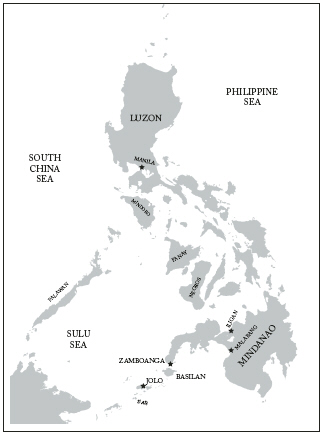
By 1450 a Mecca-born Arab trader named Syed Abu Bakr had founded a Muslim sultanate on Sulu. The sultan established schools for the study of Islam and created political institutions based on Islamic teachings. As the years passed, graduates spread Islams message, first to nearby Mindanao, where the people of the Cotabato Valley converted, and then throughout the Sulu Archipelago and the southern half of Mindanao. Heretofore, the islands inhabitants had enjoyed no shared culture. Henceforth, Islam provided the only unifying bond among the thirteen or so Moro cultural-linguistic groups living in the southern Philippines. The pagan tribesmen of the hills were unmoved by Islam and continued to live their isolated lives according to their own notions.
Next page



